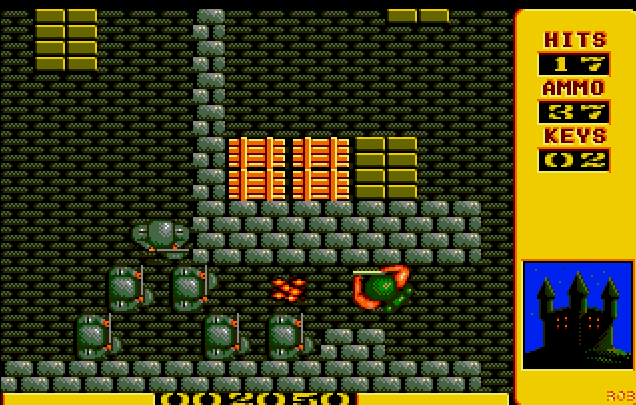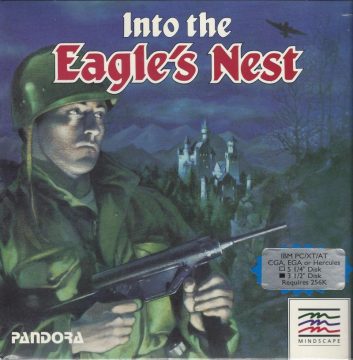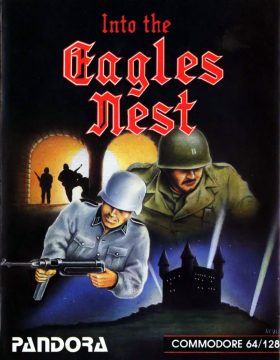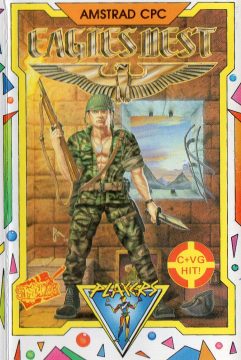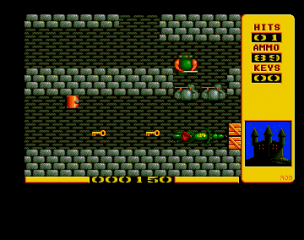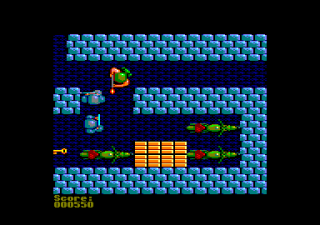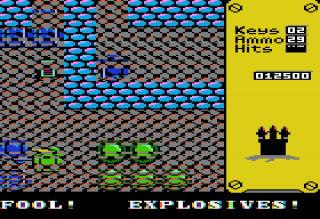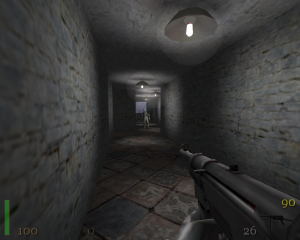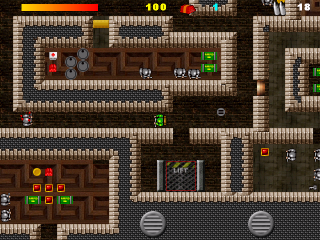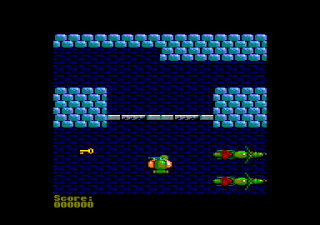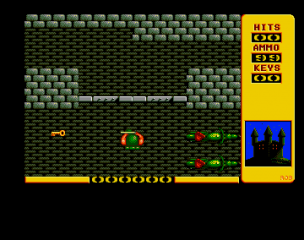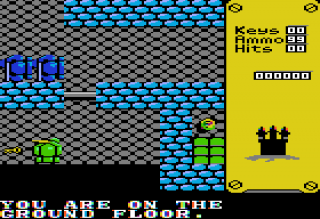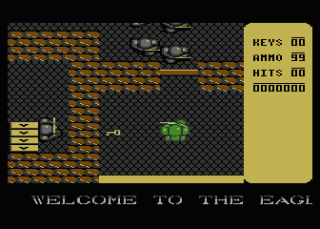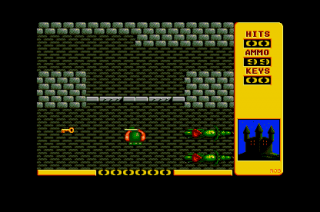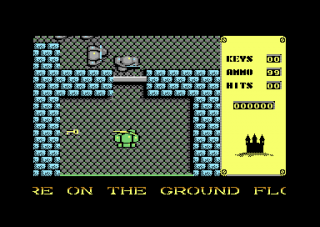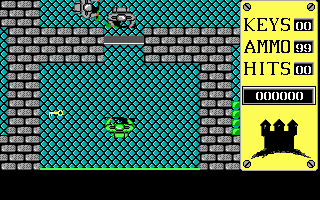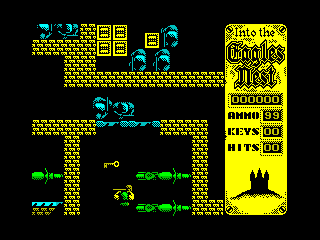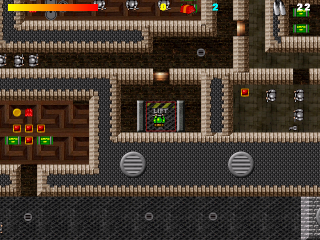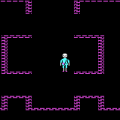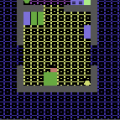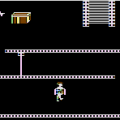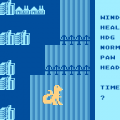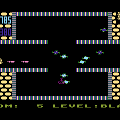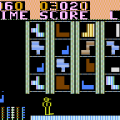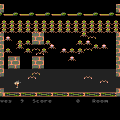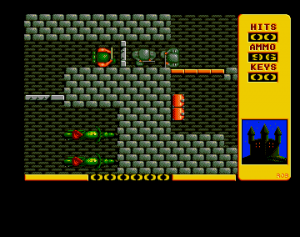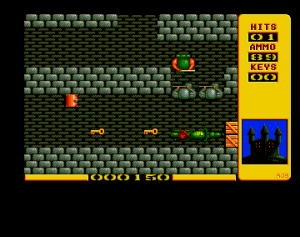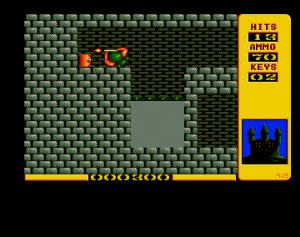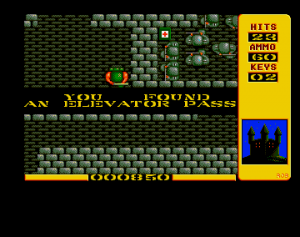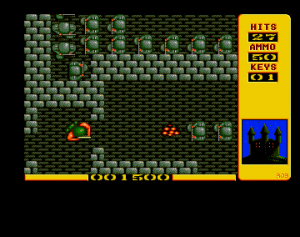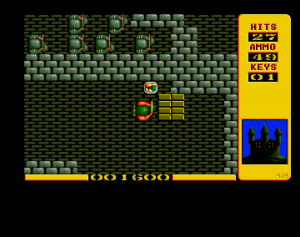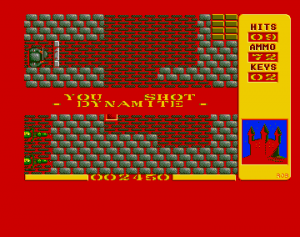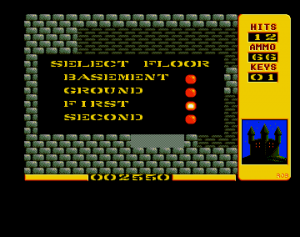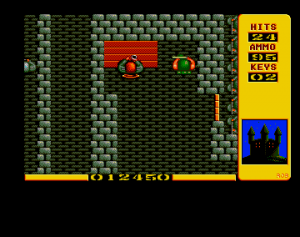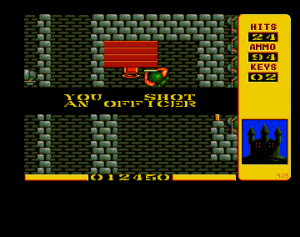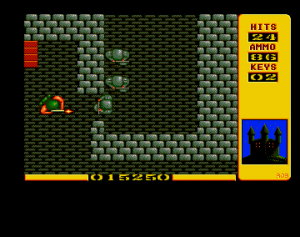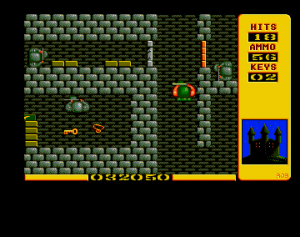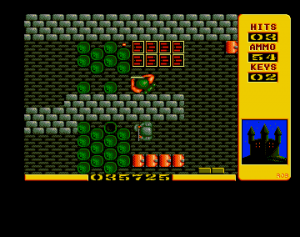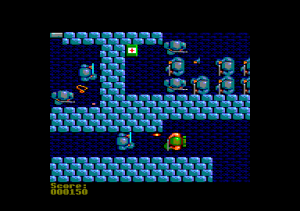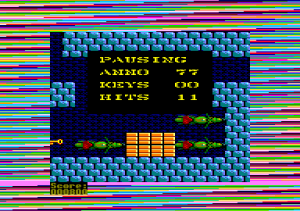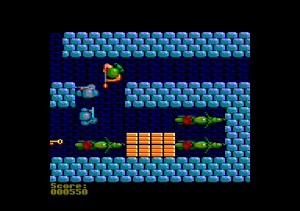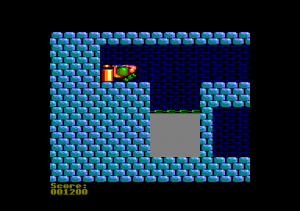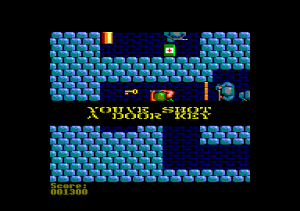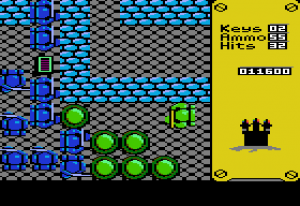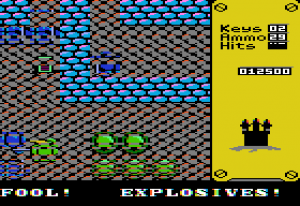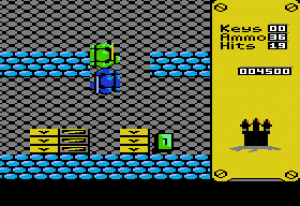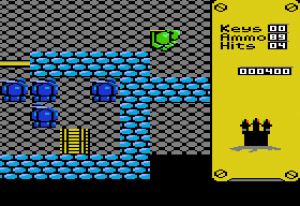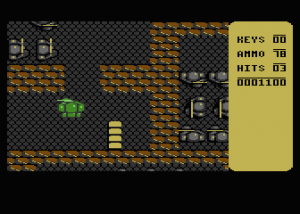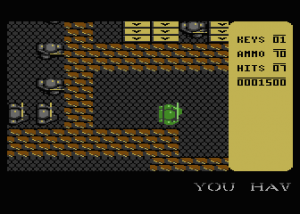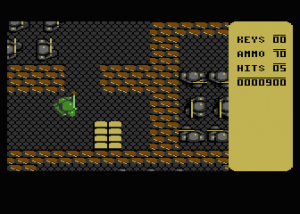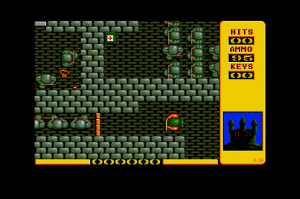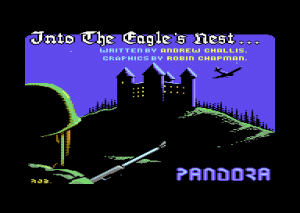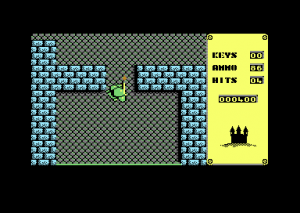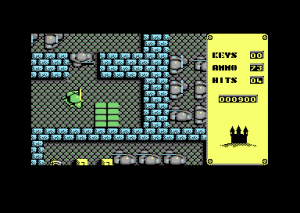World War II and video games have gone together like peanut butter and chocolate during the medium’s existence. Interpretations of the historic war range from serious strategy games & detailed simulators to the high-flying fare of Wolfenstein 3D or the Call of Duty series. Interceptor Micros, a publishing studio riding the wave of British microcomputers, had their take with Into The Eagle’s Nest, released in 1987, on a host of computing platforms of the time. Its setup and pedigree had potential to be something quite thrilling, but the finished product leaves much to be desired.
Interceptor Micros was an early player in the United Kingdom’s video game scene, founded by Richard Jones with the help of his father, Julian, in 1982. The company produced ports and games for the Commodore 64 and the ZX Spectrum, doing much of the packaging, art, and production in house. By the late 80s they expanded and created a new premium brand, Pandora, with Into The Eagle’s Nest being the first title under the new umbrella.
The story is short, simple, and a touch familiar. You are an experienced Allied soldier during the height of World War II. Nazis have taken fellow soldiers hostage and they are holed up in a fortress called The Eagle’s Nest, made up of four different castles. Your objectives are to save the soldiers and blow up the fortress. The game starts with the player at the front door of one of the castles, with the first of the many key to collect just lying out in the open.
Despite the premise, the game plays more like Gauntlet than Castle Wolfenstein. Enemies have a one track mind, homing on the player at all times. They only damage the player when nearby, lacking the ability to shoot and taking two hits to perish. The player can hold up to 99 bullets at a time and can take a total of 50 hits before dying, with cold food or a first aid kit mitigating 10 or all hits respectively. Keys are found around the castles and picking up paintings and jewelry add to the player’s score. Chests around the castle can be shot open, revealing jewels or dynamite to be collected. The elevators in each castle requires a pass to get around on, hidden on each floor. Each of the castles in the fortress take about an hour to complete, but with the game only saving high scores and not progress, most versions include a selection menu for the different castles. There are commanding officers around the castle, but for some reason, they are only ever sitting at a table, just waiting for you to shoot them for extra points.
The game actually plays out more lethargically than the arcade game it takes after, and frustratingly so. Enemies, while slow, can easily surround you in large spaces and pile on damage quick. The lack of a visible bullet means it’s hard to know if shots are connecting, and the player’s sprite always fires from the right side, making aiming cumbersome. It’s too easy to accidentally detonate dynamite just off screen, or end up low on ammo & swarmed by Nazis just getting off of the elevator between floors. Your attacks can destroy ammo packs and paintings. Keys can even be shot in the Amstrad version, meaning you could potentially soft lock with the slip of a finger at the start. The prisoners you rescue follow you, poorly, sticking so close to the player that they frequently obstruct in smaller spaces.
The different versions of Into The Eagle’s Nest shows just how varied multi-platform releases were during this time period. The game performs well on Commodore 64 and shows off just how much developers understood the machine five years into its life. Atari’s 8-bit line of computers mirrors that version with a darker palette. The Atari ST & Amiga versions are the most responsive and look largely identical, with more color and detail than other platforms, but there’s some unintuitive screen scrolling that can make getting around confusing. The Amstrad version resembles its counter parts on the Amiga and the Atari platforms, only with a bluer color palette and lower resolution. The ZX Spectrum version trucks along in the platform’s iconic look. The IBM PC version, ported by Visionware Inc. & published by Mindscape primarily for the North American market, looks solid but performs poorly. The soldier moves at a laggy pace, and the game in general doesn’t feel very responsive. The Apple II version, however, feels the slowest and most lacking. It runs on the venerable computing line, but it never feels satisfying to play, with every action, from scrolling to moving to shooting, taking forever.
Sound is sparse no matter the platform. In general, all versions feature a song playing over the attract mode, as well as some sound effects, like gun shots and footsteps, during gameplay. The Amiga, C64, & Atari ST versions include unique rocking compositions for the title screen. Other versions show their age. PC speaker sound is prevalent in the IBM PC version, with a cute little ‘plink’ when a key is shot. Gun shots sound rusty on the Apple II, or like the striking of a match on the Amstrad.
Despite coming and going pretty quickly, Into The Eagle’s Nest didn’t fall entirely into obscurity. Around 2003, Smila, a member of the long defunct dev group, Mersey Remakes, whipped up an unofficial freeware remake using Multimedia Fusion (now Clickteam Fusion). It introduces new mechanics, like using dynamite to open doors & extra weapons, and provides an updated look. It’s much more janky in practice. Enemies are unpredictable and some soak up much more than two shots, and there is a dearth of dynamite, with one wrong placement likely leading to an unwinnable situation. In late 2020, a mod for Return to Castle Wolfenstein was released on moddb by kurtis2221, which recreates four floors of one castle and its objectives. The subject matter and style of game naturally meshes well with RTCW, which was already about Nazis and killing them in castles, but it also inherits some of the same problems as the original game, namely hit-scan enemies and a dingy aesthetic that is sometimes hard to see.
Into The Eagle’s Nest was uniquely positioned in a way that it never really got the chance to capitalize on. A game like this would have translated well to a faster-paced console port or arcade version, given how much it takes after Gauntlet, or a sequel could have just as easily served as the generative spark for the first person shooter genre, like Wolfenstein 3D did, with all the elements it already had. But alas, fate had different plans. Interceptor Micros never followed the game up, the Pandora label eventually fell to the wayside, and by the time the Berlin Wall collapsed, the company vanished. Perhaps, had things gone differently, gamers might be bemoaning and debating the quality of the yearly release cycle of Into The Eagle’s Nest, rather than Call of Duty.
Screenshot Comparisons
